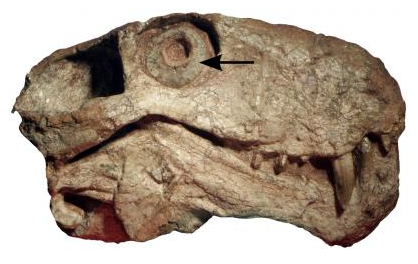 |
| The Philippine Tarsier's large eyes give it excellent night vision |
Their large brains with enlarged ocular, auditory and olfactory processing and highly attuned senses, make them ideal for functioning at night; but their night vision is perhaps their most exceptional trait.
Snakes have the ability to see the infra-red part of the spectrum. This allows them to see their prey as glowing patches perfectly contrasted against the cool, dark night time environment. Mammals see the visible part of the spectrum only, utilizing immensely sensitive eyes to collect what little light remains in the near pitch black night. These are remarkable evolutionary designs. Now a recent discovery has shown that their nocturnal heritage extends back even further than the first mammals on Earth.
Mammals evolved from a group of reptiles known as the synapsids around 200 million years ago. Using new fossil evidence a team of researchers has shown that the synapsids themselves possessed decent night vision. 'Synapsids are most common in the fossil record between 315 million years ago and 200 million years ago. The conventional wisdom has always been that they were active during the day (or diurnal), but we never had hard evidence to say that this was definitely the case,' said Kenneth Angielczyk, a curator at The Field Museum in Chicago and leader of the study.
 |
| The black arrow indicates the position of the scleral ossicles in Dimetrodon, a synapsid from the Permian period |
'This is the first time we can make informed predictions about the activity patterns of synapsids,' added Lars Schmitz, a professor of biology at Claremont McKenna, Pitzer, and Scripps Colleges near Los Angeles. 'As we discover more fossils, we can continue to test these predictions and start to address questions such as how many times nocturnality evolved in synapsids and whether the synapsids most closely related to mammals were also nocturnal.'
Mammals made their début on the evolutionary stage 200 million years ago, but only in a minor fashion thanks to the dominance on the dinosaurs, which restricted the number of ecological niches they could exploit. Their diminutive size and night vision, however, gave them a nocturnal advantage, allowing them to survive past the extinction of the dinosaurs and to become a dominant animal group. Unlocking their evolutionary heritage is vital if we are to understand their success.